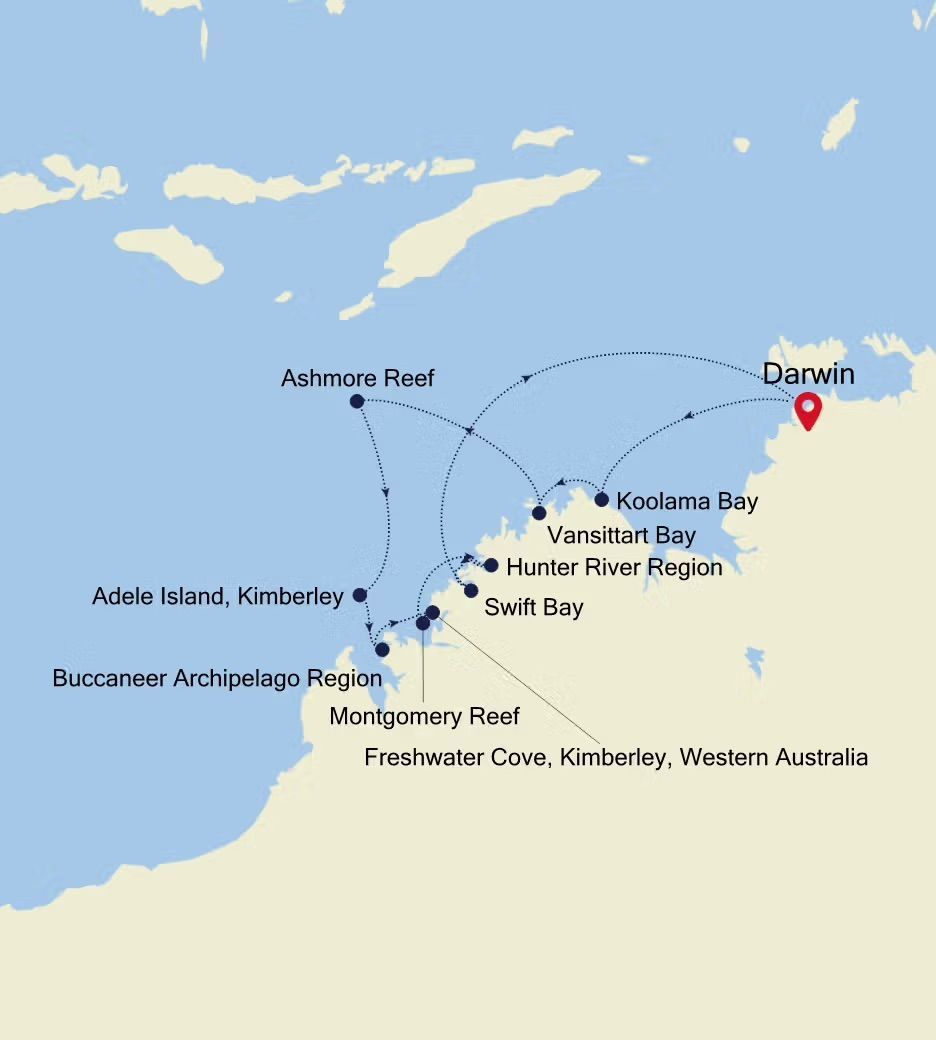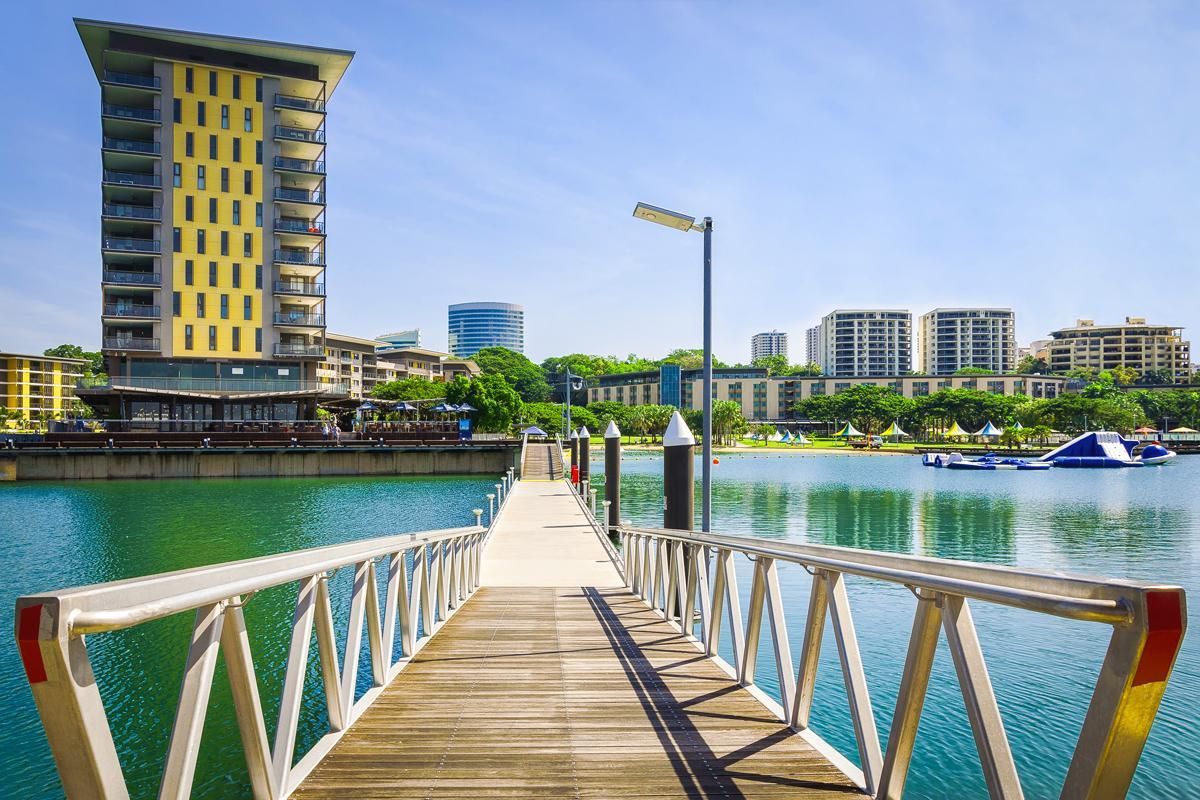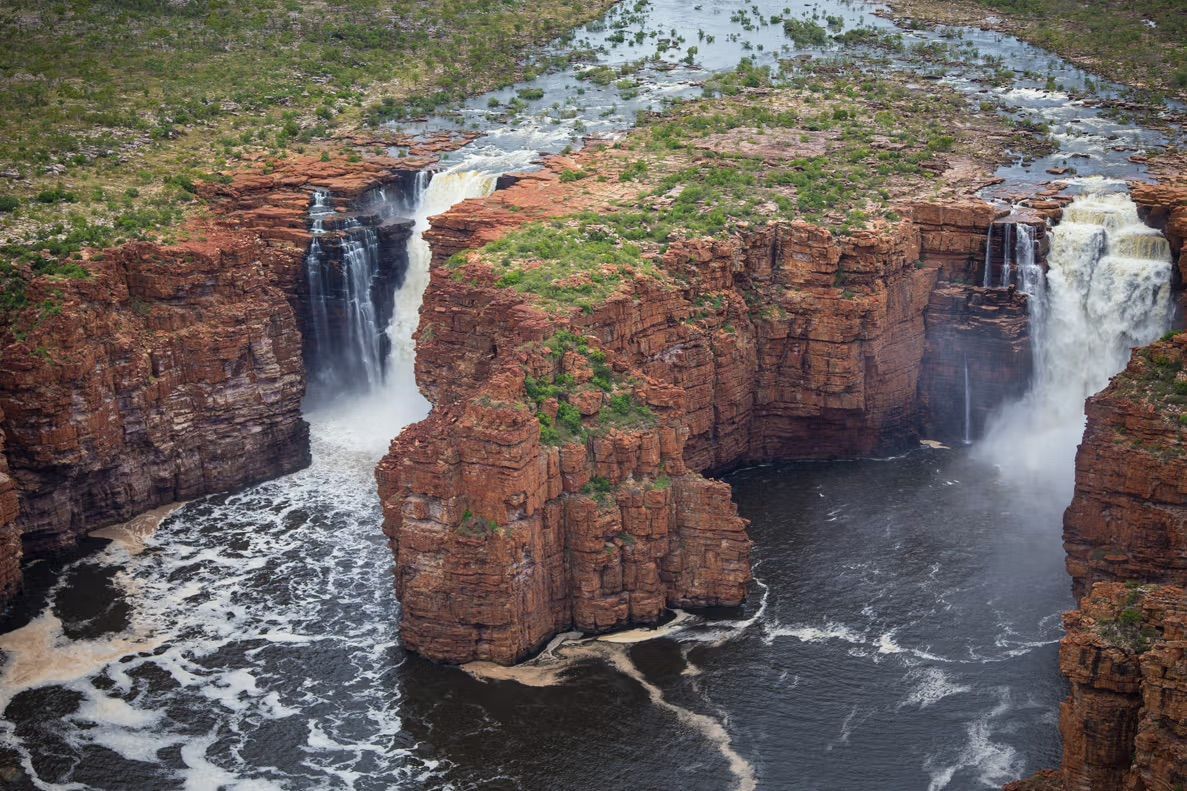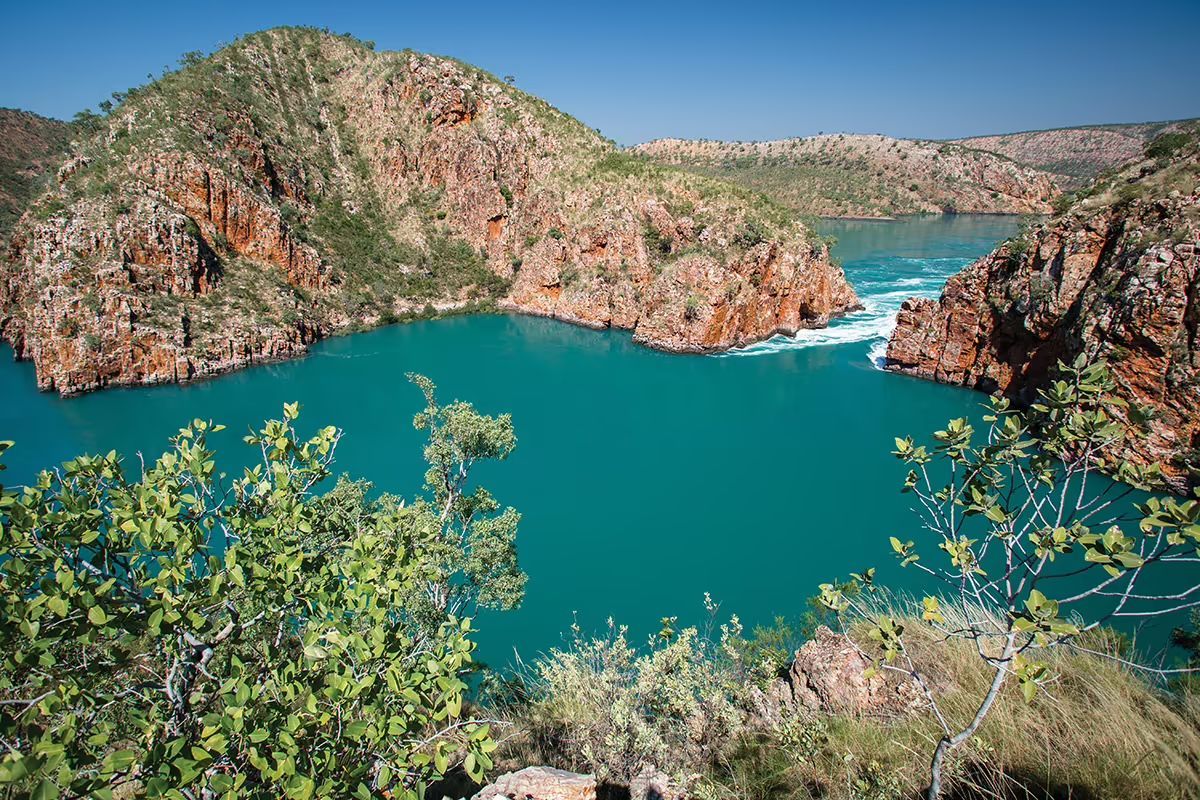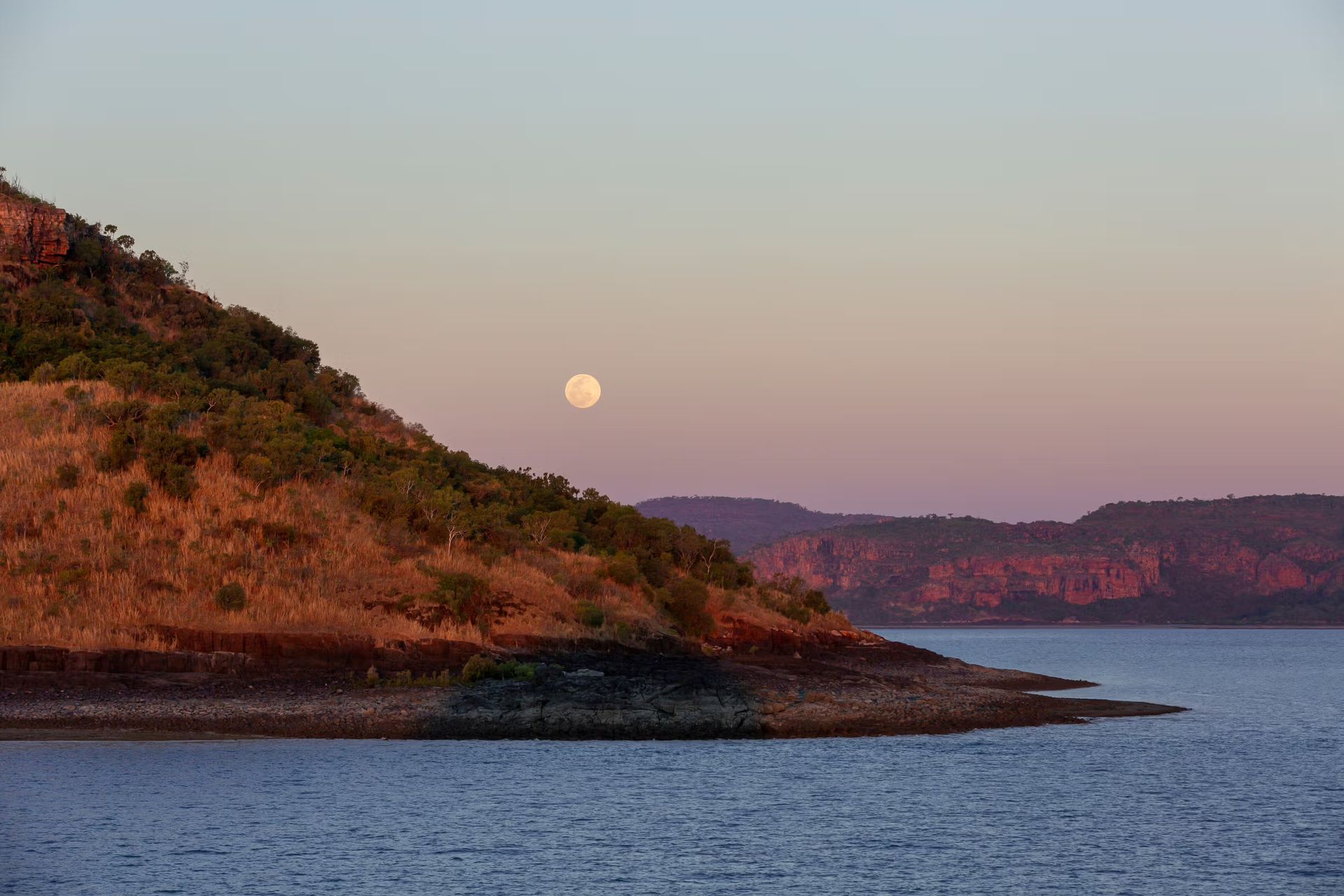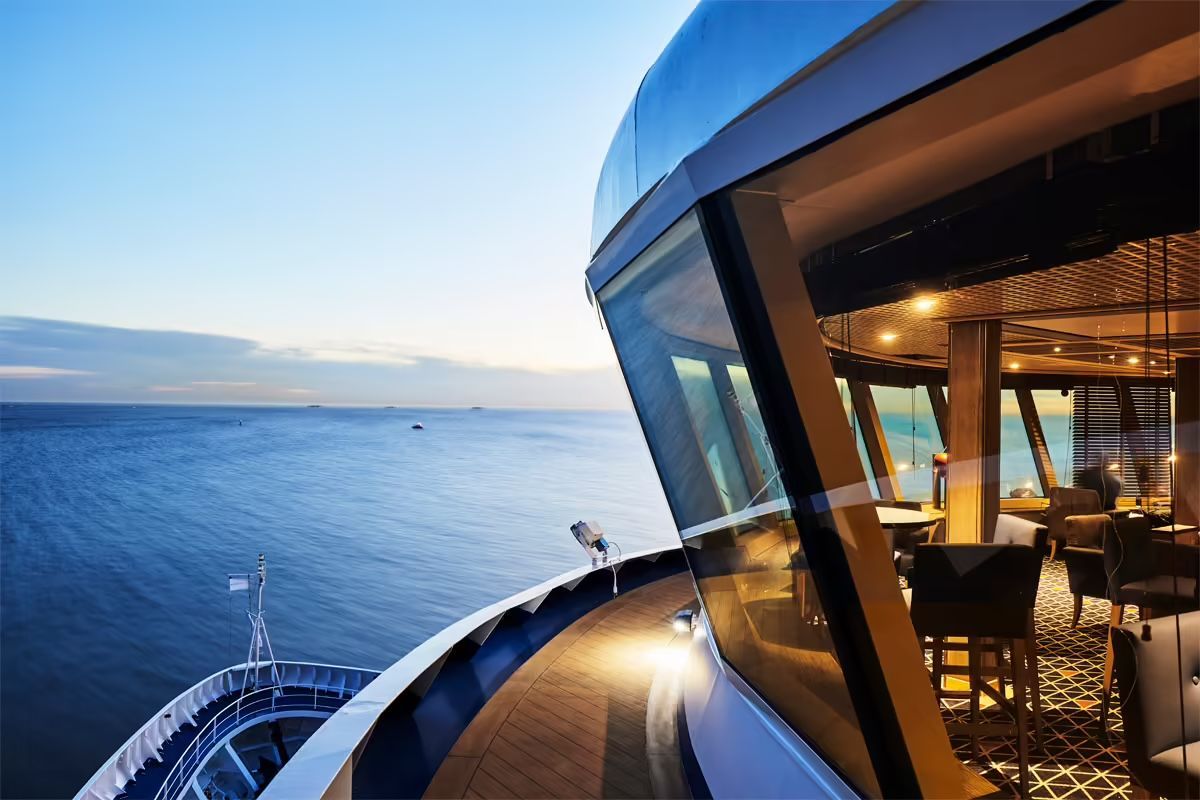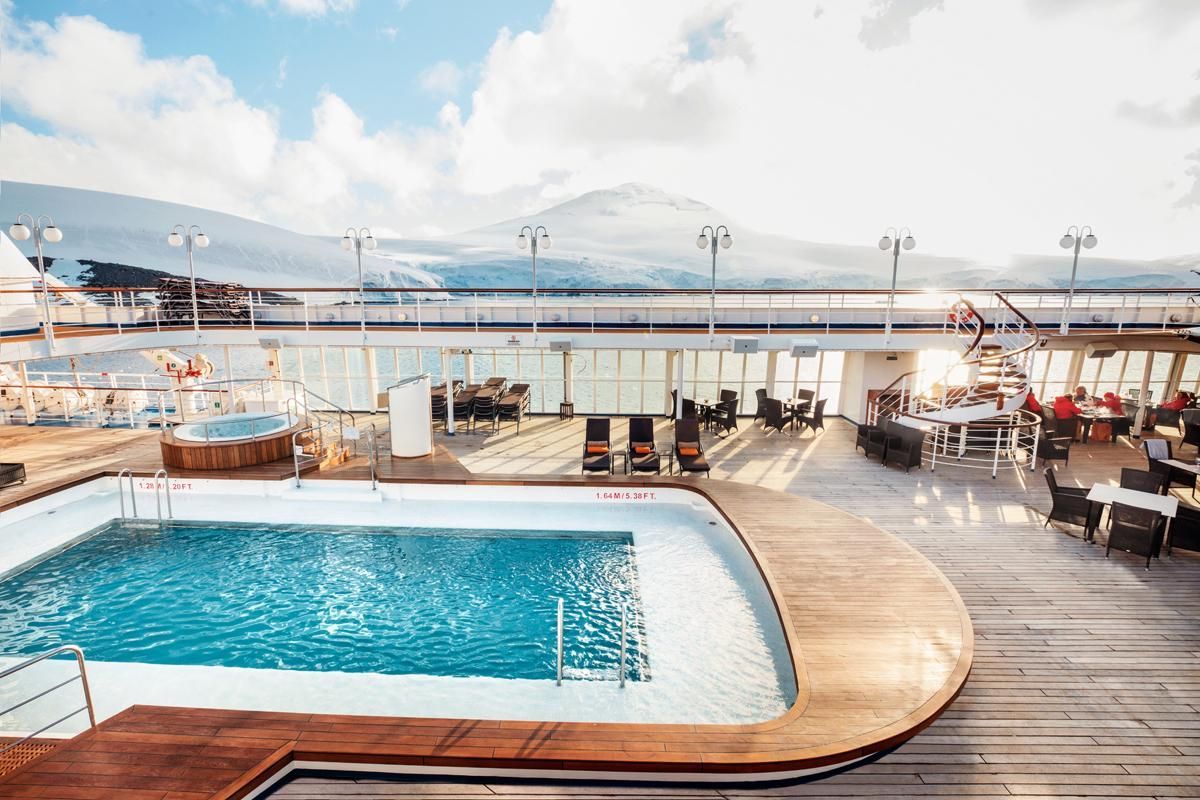Darwin
Australia
11 Days
Darwin to Darwin
Expedition Cruise
Countries
Australia

Overview
Ancient art, cliffs sculpted by the elements, and sapphire blue waters welcome you to the spectacular Kimberley Coast. Bookended by tropical Darwin’s charms, discover a coastline steeped in rich human heritage. Explore the mighty Buccaneer Archipelago’s maze of islands, and marvel at Montgomery Reef, a marine wonderland unveiled by dramatic tidal shifts. A thrilling journey of close-quarter wildlife encounters and early Aboriginal artwork.
All-Inclusive Onboard Benefits
Enjoy the 24-hour gourmet dining, butler service, superb entertainment, and premium beverages that Silversea is known for.
Staff & Services
- Butler service for every suite
- Personalized service — nearly one crew member for every guest
- 24-hour in-suite dining
- Complementary city center transportation when required by the destination
- Port taxes and fees
Leisure on Board
- Choice of restaurants, diverse cuisine, open-seating dining
- Unlimited pour of champagne, spirits and up to 50 wines from the Silversea Cellar
- Coffee, specialty coffees, and fine teas
- Enrichment lectures and onboard entertainment
- Unlimited access to fitness center, spa's sauna, steam room, and relaxation areas (according to opening hours)
Utilities & Amenities
- Complimentary Wi-Fi
- Onboard gratuities
Itinerary
Silver Cloud
Silver Cloud is the first crossover ship in our fleet, bringing the remote and remarkable to you in ultra-luxurious comfort. Her large suites, destination itineraries and unparalleled service make her truly special. Four dining options will tantalise your taste buds, and as 80% of her suites include a veranda, watching a breaching whale from the comfort of your balcony never been so personal. With her 20 zodiacs, 10 kayaks, possibilities are almost limitless with ship-wide simultaneous explorations.
Love this cruise?
Have Viking Travel book your next getaway!


